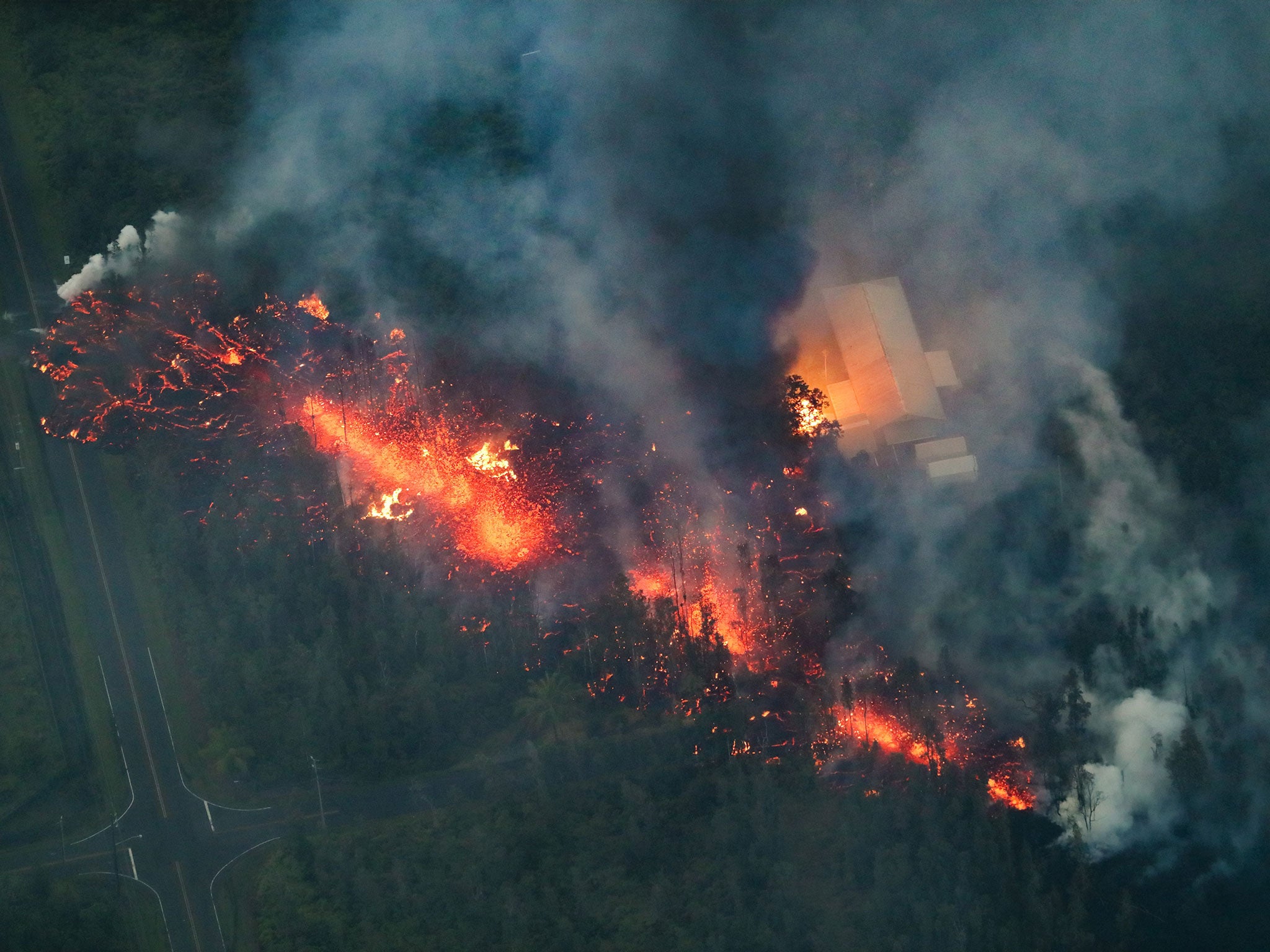Hawaii volcano eruption: Earthquakes, lava flows and toxic gas could last for months, scientists warn
Scientists say eruptions could continue 'for weeks or months'
Your support helps us to tell the story
From reproductive rights to climate change to Big Tech, The Independent is on the ground when the story is developing. Whether it's investigating the financials of Elon Musk's pro-Trump PAC or producing our latest documentary, 'The A Word', which shines a light on the American women fighting for reproductive rights, we know how important it is to parse out the facts from the messaging.
At such a critical moment in US history, we need reporters on the ground. Your donation allows us to keep sending journalists to speak to both sides of the story.
The Independent is trusted by Americans across the entire political spectrum. And unlike many other quality news outlets, we choose not to lock Americans out of our reporting and analysis with paywalls. We believe quality journalism should be available to everyone, paid for by those who can afford it.
Your support makes all the difference.Thousands of people who were evacuated after Hawaii’s Kilauea volcano continued to erupt are preparing for the possibility they may not return home for some time.
The number of houses destroyed by lava shooting from openings in the ground created by the eruption has increased to five, while hundreds of small earthquakes have continued to rumble.
Scientists forecast further eruptions and earthquakes, perhaps for months to come, after Big Island was rocked by a 6.9-magnitude tremor on Friday, the strongest the island has seen since 1975.
The US Geological Survey (USGS) said several new lava fissures had opened in the Leilani Estates subdivision of Puna District, which is about a dozen miles (19km) from the volcano. Not all the fissures were still active, it added.
But the Hawaiian Volcano Observatory said “eruptive activity is increasing and is expected to continue.”
Janet Babb, a spokeswoman for the observatory, told Reuters the eruptions could carry on “for weeks or months.”
She added that the activity is beginning to show similarities to another event in the area in 1955, which lasted for 88 days, when far fewer people lived near the volcano.
Leilani Estates is at the greatest risk, and authorities ordered more than 1,700 residents to evacuate from there and nearby Lanipuna Gardens.
Earthquakes continued throughout the weekend as a result of magma moving through Kilauea, according to geologists, who warned of aftershocks.

Authorities also said sulphuric gas pouring out of the vents posed further dangers, particularly to elderly and people with respiratory problems.
The Hawaii Fire Department also warned of ”extremely dangerous air quality conditions due to high levels of sulfur dioxide gas in the evacuation area.” The gas can cause skin irritations and breathing difficulties.
Hawaii County spokeswoman Kanani Aton said some residents may be allowed to return home briefly to pick up medicine or take care of pets if sulphur dioxide levels drop as a result of the calming vents.
Kilauea, one of the world’s most active volcanoes and one of five on the island, has been in constant eruption for 35 years. Lava flows from the volcano have covered 48 square miles (125 square km), according to the USGS.
Nearly 30 years ago, lava slowly covered an entire town, Kalapana, over the period of about a year.
No injuries or deaths were reported after Kulauea started spewing lava following a series of earthquakes, but the governor of Hawaii, David Ige, activated the Hawaii National Guard to provide emergency help.

Join our commenting forum
Join thought-provoking conversations, follow other Independent readers and see their replies
Comments